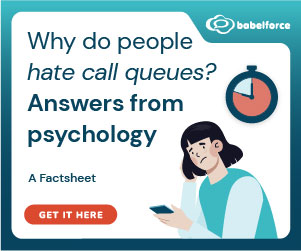Selling over the phone can be challenging, but mastering the right techniques makes all the difference.
In this article, Andy Preston and our readers explore effective sales techniques over the phone, focusing on how to sell over the phone with confidence, build rapport, and use verbal nods to enhance your conversations.
How to Sell Over the Phone
Whether you’re learning how to be a good seller over the phone or looking to refine your current approach, these 26 practical tips will help you engage with customers more naturally, handle objections, and close deals successfully.
1. Be Confident
Confidence is vital, whether the call is inbound or outbound. For anyone to buy from you or take the action you want, they have to see you as someone who knows what they’re doing!
Far too many people make outbound calls with fear or hesitation in their voice – resulting in a poor impression of themselves, their company and their product/service.
In order to be confident you need to ensure that you understand the basics of the product or service you’re selling, be composed at the start of the call and make sure you deliver your script with a strong voice tone!
One of the biggest mistakes I hear people make on the telephone is to sound too ‘weak and wimpy’ – meaning that the people on the other end of the phone don’t take them seriously.
If you are looking for advice on building agent confidence, read our article: How to Build Advisor Confidence
2. Be Natural
I’ve lost count of how many calls I’ve heard made where the person making it sounds ‘false’. They’re either reading a script given to them by someone else that they don’t believe in, or they don’t take the time to learn what they need to say well enough (so it doesn’t sound like them).
If you’re working on a new product or service or in a new area, you’ve got to take the time to learn what you’re saying.
Most people don’t bother to do this well enough, but if you do, you’ll find that it starts to sound more natural, as once you’ve mastered the words, you naturally start to put your own voice inflections and tonality onto the script, so it sounds more like you – therefore more natural!
Customers want sales people who sound ‘natural’ and able to have a conversation, for advice on this, read our article: Sales Techniques: Conversational Selling
3. Listen More
This is a telephone sales skill that should come naturally to everybody, yet most people fail to do it anywhere near well enough! I’m always saying that there is a difference between ‘hearing’ and ‘listening’.
True listening involves things like ‘verbal nods’ like ‘uh-huh’, and ‘I see’, paraphrasing back what someone has just said to you and asking further questions about a piece of information the customer has just given to you.
This is very common in everyday social situations, yet I’m often amazed how many people can’t do it when it comes to a sales situation!
In order to be able to do this more effectively you have to take a genuine interest in the person you’re speaking to – again, something that most people don’t bother to do.
The key here is to get the person on the other end of the phone into a conversation, not an interrogation!
For advice on developing vital customer service skills, read our article: Customer Service Skills: How to Improve Empathy, Active Listening and Knowledge
4. Don’t Assume
Yes, I know. You’ve heard this before. But if people did anything about it then people like me wouldn’t need to keep saying it!
I’ve lost count of the number of calls I’ve heard where the person making the call thinks they know what the customer is about to say, therefore they ‘switch off’!
In most cases, whenever the caller finishes off the customer’s sentence, they get it wrong – leading to the other person having to correct them and a loss of rapport.
One of the most common examples of this is when the person making the call starts finishing off the sentences of the other person!
What’s that about? This only serves to irritate the customer and sometimes results in them putting the phone down – not the sort of result the caller was looking for!
In most cases, whenever the caller finishes off the customer’s sentence, they get it wrong – leading to the other person having to correct them and a loss of rapport. Again, not the result we were looking for!
5. Make It Interesting!
This is something that has affected every person who has made an outbound call at some point in their career – and it affects some people every day!
If you’re the sort of person that has to make a large number of outbound calls in which you’re saying the same or similar things on each call, this is probably affecting you right now!
Think about it… you’ve delivered your script probably 70 times today already. You get through to the next person and, guess what – you sound like it’s the 70th time you’ve delivered it today!
The problem is, it’s the first time this particular person has heard it! Don’t they deserve your best effort, rather than the tired, bored, ‘I’d rather be at home than making this call’ way in which you’ve just delivered it?!!
Contributed by: Andy Preston
If you are looking for tips on Positive Scripting and advice on how to create a good script, read our article: Positive Scripting For Customer Service – With Examples
6. Eliminate Fillers
Verbal tics (often referred to as “fillers”), such as “umm,” “like,” and “you know,” are often used unconsciously in conversation, especially when we are unsure or nervous.
Frequent use of fillers disrupts the flow of conversation and may cause the customer to lose focus or interest
In a sales call, however, these fillers can negatively impact your professionalism and authority. They signal hesitation, uncertainty, or a lack of confidence, which can make customers doubt your expertise or the value of what you’re offering.
Frequent use of fillers disrupts the flow of conversation and may cause the customer to lose focus or interest, weakening your ability to build rapport and close the sale.
To avoid this, practice replacing fillers with intentional pauses. A brief moment of silence gives you time to collect your thoughts and demonstrates that you are carefully considering what to say next.
It also encourages the customer to stay engaged, as they will subconsciously anticipate your next words. Pausing instead of filling the gap with unnecessary words makes you sound more composed, confident, and authoritative.
By refining this skill, you can elevate the quality of your sales conversations, helping you to communicate more clearly and effectively.
Verbal communication is more than just the words used, for advice on this, read our article: How to Use Vocal Pace Tone and Pitch on the Phone
7. Listen to Phone Calls
A highly effective way to improve your performance over the phone is to listen to recordings of your calls.
By reviewing them, you can identify both strengths and areas that need improvement. Pay attention to your tone, clarity, and any fillers you might use. You can also assess how well you handle customer objections and whether you’re effectively presenting solutions.
Listening to your calls helps you understand if you’re truly engaging with the customer—are you asking the right questions, actively listening, or talking too much?
This reflection will help you spot opportunities where the conversation could have gone better, such as moments where you missed a chance to close the sale or didn’t fully address a concern.
To get the most out of this practice, take notes on key areas like confidence, rapport-building, and objection-handling.
This self-assessment provides valuable insights, enabling you to refine your technique and continually improve your sales approach. Over time, this habit will boost both your communication skills and your ability to close more sales.
You can also use mock calls to improve your skills, for advice, read our article: How to Use Mock Calls to Improve Agent Performance – With Free Exercises
8. Sit Up Straight or Stand Up
Research has suggested that having good posture when making a phone call not only helps you to speak with more conviction, but also enhances your overall presence, making you sound more authoritative and confident.
When you sit up straight or stand, you allow your lungs to fully expand, which supports stronger, clearer vocal projection.
This added clarity and vocal strength can make a significant difference in how your message is received.
Good posture also promotes better breathing, which can reduce tension and anxiety, allowing you to maintain composure even during difficult conversations. Ultimately, proper posture can help you stay focused, energized, and more persuasive on the phone.
For expert advice on why body language really is so important even when customers can’t see you, read our article: The Truth About Body Language on the Phone
9. Prepare for Common Objections
Hesitation and fear often arise when a customer challenges your assertions, as this can signal to them that you do not fully understand the product or service you are selling.
To combat this, it’s crucial to prepare for common objections in advance and create bullet-pointed responses in the form of a script, allowing you to address concerns confidently and feel assured at all times.
Additionally, practicing these responses regularly will help you sound more natural and composed, further enhancing your credibility during the conversation.
For more information on objection handling, read our article: Handling Sales Objections Over The Telephone
10. Declutter Your Workspace
Decluttering your desk and nearby surroundings will ensure that you have easy access to everything you may possibly need to assist the customer interaction, including important documents, notes, or tools that help you stay organized.
This organized workspace will not only decrease hesitancy levels but also boost efficiency, allowing you to respond to customer inquiries quickly and confidently.
It will enable you to work in a more structured, methodical, and focused manner, ensuring smoother interactions and a more professional experience for both you and the customer.
11. Smile
The old adage is “smile while you dial,” and there is strong evidence to suggest that smiling not only elevates the tone of your voice but also boosts your overall energy during the call, making you sound more friendly, approachable, and warm.
While the customer may not physically witness your smile, they can certainly hear it in the way you communicate
This positive shift in tone can help build rapport and trust with the customer, even if they cannot see you.
So, while the customer may not physically witness your smile, they can certainly hear it in the way you communicate, creating a more engaging and pleasant conversation.
Furthermore, smiling can improve your mood and reduce stress, helping you maintain a positive attitude throughout the call.
12. Check Your Smile with a Mirror at Your Desk
If you keep a mirror at your desk when you are speaking on the phone, you can check your smile and other facial expressions that you are using during the conversation.
As how you look is how you sound, this will give you a good idea of how you are being interpreted on the other end.
13. Practise Talking 20% Slower
If you get nervous on the phone, it’s quite common to start speaking more rapidly, which can make you sound rushed and less coherent.
This quick speech often leads to miscommunication and can make it harder for the customer to follow your points.
To counter this, make a conscious effort to talk slowly, aiming to speak approximately 20% slower than your usual pace.
This adjustment will help you sound more natural, deliberate, and clear, allowing the customer to better understand and engage with what you’re saying.
Additionally, do not be afraid of pauses or moments of silence; these can be powerful tools in a sales conversation.
A brief pause can give the customer time to process information, and it shows that you are thoughtfully considering your responses. This approach not only enhances clarity but also demonstrates confidence and control over the conversation.
There are many different ways to improve contact centre sales conversion rates, for advice, read our article: 5 Tips to Improve Your Call Centre Sales
14. Speak From Your Chest
When you get nervous, you will often notice that your voice shifts from its natural resonance in your chest upwards, causing the sound to emerge from your nose and throat.
This shift results in a whiny, high-pitched tone that lacks the natural depth and authority needed to convey confidence to the listener.
Such a voice can make you sound uncertain or unconvincing, which can undermine your message. To counteract this, take a deep breath and focus on speaking from your chest rather than your throat.
Practicing speaking in a deeper, more grounded tone helps maintain a steady and assured voice. This adjustment not only improves how you are perceived but also helps you project confidence and professionalism, making your communication more effective and impactful.
Regular practice of this technique can gradually help you overcome nervousness and ensure your voice remains strong and clear during calls.
Watch this short video clip where Clinton Jordan, The Motivational Vocal Coach, gives an example of the contrast between vocal tones.
15. Use the Customer’s Name at Least Three Times in a Call
Regularly using the customer’s name during a conversation is a powerful way to demonstrate that you are actively listening and engaged.
Addressing them by name helps to establish a personal connection, making them feel valued and more respected.
This approach fosters rapport, as people are more likely to pay attention and show greater interest when they hear their name. It encourages them to engage more deeply with your ideas and provide more detailed information about their needs.
By making the customer feel recognized and respected, you enhance the effectiveness of your communication and build a stronger, more impactful relationship.
Not sure if you should call customer’s by name, read this article for advice: Should We Call Customers by Name?
16. Apply “Verbal Nods” to the Conversation
Verbal nods, such as “uh-huh,” “I see,” and “absolutely,” are essential in preventing awkward silence during phone conversations.
Silence can make the customer feel neglected or uncertain about whether you’re paying attention. By using these verbal affirmations, you reassure the client that you’re actively engaged and understanding their points.
This practice helps to maintain a positive and interactive dialogue, demonstrating that you value their input and are attentively following the conversation.
It fosters a sense of connection and encourages the customer to continue sharing their thoughts and concerns, ultimately leading to a more productive and successful interaction.
For advice to help avoid dead air time in customer service calls, read our article: Seven Tips to Avoid Dead Air Time in Customer Service Calls
17. Repeat a Customer’s Word or Phrases
Repeating a word or phrase that your client has used is a strategic way to encourage them to expand on their thoughts.
For instance, if a customer says, “I need it to be reliable and cover…” and you respond by repeating the word “reliable,” it prompts them to elaborate further on what reliability means to them.
This technique not only helps you gain a deeper understanding of their specific needs and preferences but also makes them feel heard and valued.
By encouraging clients to provide more detailed information, you can tailor your responses and solutions more effectively, ultimately leading to a more personalized and successful interaction.
18. Summarise What the Customer Says
If you summarise what the customer has said and then repeat it back to them, it serves several important purposes.
First, it confirms to the customer that you have been actively listening and fully grasp their concerns or needs. This acknowledgment demonstrates that you value their input and are committed to understanding their situation accurately.
By restating their key points, you also provide them with an opportunity to clarify or expand upon their thoughts, ensuring that there is no misunderstanding. This practice not only fosters trust and rapport but also helps to avoid potential miscommunications.
Summarising and repeating back the customer’s information can also reinforce their confidence in your ability to address their needs effectively and can facilitate a more productive and focused conversation.
19. Clarify Key Information Points
Often, a customer might gloss over a key point or detail that could significantly influence the outcome of a sale.
In such cases, it’s crucial to gently prompt them for more information by saying something like, “Can you tell me more about that, please?”
A customer might gloss over a key point or detail that could significantly influence the outcome of a sale, so it is crucial to gently prompt them for more information.
This approach not only helps to clarify the situation for both you and the customer but also ensures that no important details are overlooked.
By asking for further elaboration, you demonstrate your attentiveness and commitment to understanding their needs fully. This can uncover valuable insights that might otherwise remain hidden, leading to a more informed and effective sales strategy.
Probing for more information can help you tailor your responses and solutions more precisely to meet the customer’s specific requirements, ultimately enhancing the overall quality of the interaction and increasing the likelihood of a successful sale.
If you want advice on how to better weave probing questions into customer conversations, read our article: Techniques to Improve Your Probing Questions
20. Ask Questions
By asking questions, you uncover valuable information about what is truly important to the customer. This approach not only provides crucial insights but also signals your genuine interest in their needs.
Demonstrating this level of attentiveness is key to building rapport and trust, which significantly boosts the likelihood of a successful sale.
Engaging with customers through thoughtful questions fosters a deeper connection, helping you tailor your offerings more precisely to meet their specific requirements and ultimately enhancing your chances of closing the deal.
21. Present Solutions
Customers are typically more interested in how your product benefits them rather than its design or technical details. They want to know how it will solve their specific problems or enhance their experience.
By listening carefully to their needs and challenges, you can identify how your product provides personalized solutions.
For example, if a customer seeks time-saving solutions, highlight how your product’s features can streamline their tasks.
Focusing on these practical benefits, based on the customer’s input, makes your pitch more relevant and compelling, ultimately increasing your chances of closing the sale.
If you wish to learn how to greater present offers, along with solutions, read our article: Call Control Techniques: How to Present Options to Customers
22. Rephrase Instructions
Occasionally, it can be challenging to avoid making assumptions when a customer does not fully disclose their information, even after you’ve made efforts to prompt them.
In such situations, it is helpful to replace directive phrases like “you should” with collaborative language such as “let’s.”
This shift not only helps to clarify the next steps for both you and the customer but also fosters a sense of partnership and shared responsibility.
By using “let’s,” you emphasize that you are working together toward a common goal, which can help build stronger rapport and trust.
This collaborative approach ensures that both parties are on the same page and contributes to a more open and cooperative dialogue, leading to more effective problem-solving and a better overall customer experience.
23. Practise Your Approaches
If you stick to the same rigid process with every call, you will begin to bore yourself, and consequently you will not be engaging with your customers.
Take time to listen to other representatives and gather fresh ideas to test out on your customers. Observing their techniques can provide valuable insights for your own calls.
If you stick to the same rigid process with every call, you will begin to bore yourself, and consequently you will not be engaging with your customers.
To keep your approach dynamic, experiment with different methods for each call. By incorporating new ideas, you maintain your enthusiasm and improve customer engagement, leading to more effective communication and better outcomes.
This variability not only refreshes your approach but also enhances the overall quality of your customer interactions.
24. Do Not Fall for the “Gambler’s Fallacy”
After a streak of bad sales calls, your luck will soon change, right? Wrong.
This is a psychological trap that we have all fallen into in our lives. For example, you toss a coin three times and each time it has landed on heads.
Part of you assumes that it must land on tails the fourth time, so that the odds start to balance out. However, the odds remain 50-50.
A salesperson must not make these same assumptions, as if you have a prolonged series of no sales, it will most likely be due to an unrefined approach, technique or a lack of confidence. This is a signal that you need to work on your sales technique.
25. Do Not Fall for the “Recency Effect”
A common principle in psychology is that people tend to remember the most recent item they encounter, known as the “recency effect.” In sales, this can negatively impact outcomes.
For instance, if a salesperson notices that recent customers favour one product over another, they might start focusing only on the popular item. This can lead to neglecting the less popular item, even if it might meet other customers’ needs.
Not presenting all available options can limit customer choices and reduce potential sales. Ensuring that all options are disclosed helps maximize sales and improves customer satisfaction by offering a complete view of what’s available.
26. Create Rapport
As mentioned frequently throughout this article, building rapport with the person on the other end of the phone is essential for increasing the likelihood of making a sale.
Establishing a genuine connection can significantly impact the success of your sales efforts. But how exactly can you achieve this?
One highly effective method is by demonstrating empathy. Empathy involves actively listening to the customer, acknowledging their feelings, and showing that you truly understand their needs and concerns.
By focusing on their perspective and validating their experiences, you convey that they are your primary concern in the conversation. This approach not only helps in building rapport but also fosters a sense of trust and partnership.
When customers feel understood and valued, they are more likely to engage positively and consider your product or service as a viable solution to their needs.
Ultimately, creating this empathetic connection can lead to a more meaningful interaction and increase the chances of a successful sale.
For tried-and-tested empathy statements for customer service that can help agents build great rapport, read our article: Empathy Statements for Customer Service With Examples
If you are looking for more advice and resources on sales calls, read these articles next:
- The Right Words and Phrases to Use on a Sales Call
- 25 Tips to Make Your Telesales People More Productive
- Training Cheat Sheet – Effective Sales Questioning
- Training Cheat Sheet – Closing Techniques
Author: Jo Robinson
Reviewed by: Robyn Coppell
Published On: 4th Jan 2017 - Last modified: 14th Aug 2025
Read more about - Skills, Skill Development, Telesales, Training and Coaching






































Being confident AND natural is such a key element of selling of the phone. It is all very well sounding very confident but it needs to be kept in check so you dont sound arrogant or as if you are high pressuring your prospect. The being natural element is crucial to compliment the confidence. The more relaxed you sound to the point you are not necessarily thinking as you talk, you just trust that the right words will come out of you mouth. No “umming or errring”